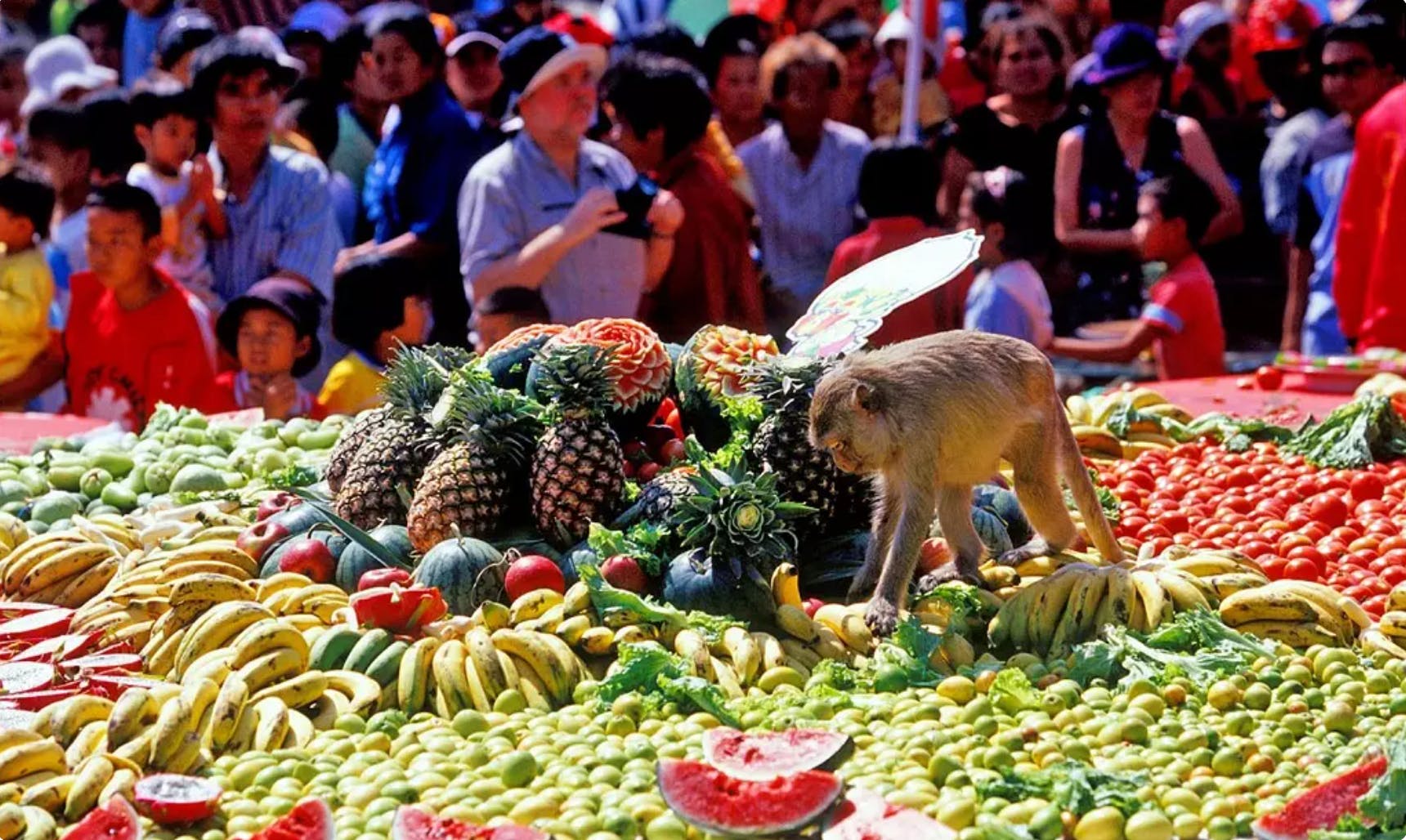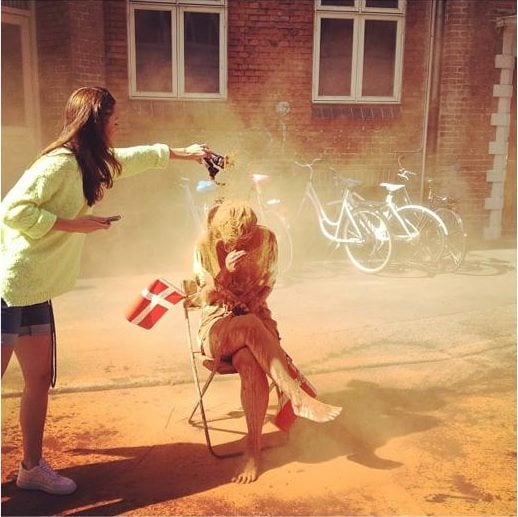Our planet is full
of traditions. In fact, every single culture on Earth has them.
But while our planet
is home to a whole host of them, there are a few traditions that are little bit
weirder and more wonderful than the others.
To highlight this
fact, we have created a top 10 list of weird traditions you can find throughout
the world.
Some were created in
the hopes of bringing good fortune to the local community. Others happened by
accident or were designed as a way of having a bit of fun.
However, bizarre as they
seem, each has stood the test of time and is still practiced today.
1. The Mari Lwyd
(Wales)
The Mari Lwyd is a
Welsh Christmas tradition that can be traced all the way back to the early 1800s.
It involves decorating
a horse’s skull then mounting it on a broomstick. The person that holds the
stick is covered with a sheet, making the skull appear like the head of some terrifying
animal.
This “horse” is then
carried throughout local villages, followed by a large group of people. At each
home the horse and its followers will stop and knock.
When a door is answered the people that are gathered around the horse burst into song, asking for entry into the home.
The homeowners must
refuse (also in song), creating a lyrical argument that continues until the
group are sent away, or are invited to enter.
2. La Tomatina
(Spain)
As a country built
from many separate kingdoms, Spain has a lot of old, regional traditions. Among
these is La Tomatina, an annual festival held in the Valencian town of
Buñol.
To put it simply, La Tomatina involves the whole town having an hour-long food fight with overly ripe tomatoes.
The tradition
started because of a genuine fight in 1945, during which some tomatoes were
thrown.
In the years that
followed more and more people started to recreate the food fight until it
became a yearly tradition.
La Tomatina was
briefly banned by Spanish dictator Francisco Franco in the 1950s but
fortunately, the tradition survived.
These days it’s so
popular that you have to buy a ticket to participate.
During the 2015 event
it was estimated that over 320,000 pounds of tomatoes were thrown.
Of course, cleaning
up this many tomatoes can be a lot of work, so after the food fight is over the
town get fire trucks in to hose everything down.
As a happy
coincidence the citric acid from the tomatoes leaves the town looking extremely
bright after the cleaning is finished.
3. Cheese Rolling
(England)
Rolling a 7–9-pound
cheese down a 200 yard hill with a group of people chasing it doesn’t instantly
sound like the most exciting tradition.
But, when that hill
has a gradient of nearly 50% and competitors are willing to risk serious injury
for winning, it becomes a very thrilling event.
The tradition of the
annual cheese roll races at Cooper’s Hill near Gloucester, England is an old one,
being over 600 years old.
Today, the races
attract competitors from around the world who fling themselves down the hill
with the hopes of catching the cheese or crossing the finishing line
first.
Cheese rolling is
known as being an extremely dangerous tradition, with serious injuries, including
broken bones and concussions being reported nearly every year.
Despite these
dangers, the races remain as popular as ever.
4. Nenana Ice
Classic (USA)
Advertised as
Alaska’s greatest guessing game, the Nenana Ice Classic is an annual wager
organized by the residents of Nenana.
The aim of the game
is to predict exactly when the ice covering the Tanana River will break.
The exact melting time of the river is measured by a wooden tripod that is placed on the ice, 300ft from the shore.
A line runs from the top of this tripod and is attached to a nearby clock tower.

When the ice melts
and the tripod moves 100ft downstream, the line snaps and the clock stops,
giving the competitors the exact winning time.
The game began in
1917 when a group of engineers placed a bet.
Today, people all
over Alaska buy tickets to bet on the ice breaking. In fact, the entry is so
big that the jackpot for winning is usually over $200,000!
As a non-profit
organization the Nenana ice classic donates all excess money to charities.
During the event’s 100+ year history over $10 million has been given away.
5. Polterabend (Germany)
The Friday evening
before a wedding is the usual time for a German tradition, known as
Polterabend, to take place.
The soon-to-be-married
couple meet with family and friends outside the bride’s – or her parents’ –
house.
Once everyone has arrived an assortment of plates, bowls, and other pieces of porcelain and ceramics (sometimes even including toilet bowls) are thrown to the floor by everyone.

Sometimes metal
objects are thrown; however, you won’t see anyone throwing glass or mirrors.
This is because glass represents happiness and breaking mirrors is thought to
bring bad luck.
Once everything has
been smashed, only the couple are allowed to tidy the shards up.
This long process is
thought to symbolize that, when married, the couple will have to survive difficult
times by working together.
6. Presidential
Turkey Pardon (USA)
The annual Presidential Turkey Pardon
is a well-loved tradition that many Americans will be familiar with.
However, to those outside the United
States, the sight of one of the World’s most powerful leaders pardoning an
innocent turkey is a very strange one.
The history of giving turkeys to
Presidents is old, beginning in the 1870s. But it was only in 1947 that the
poultry industry began to officially present the President with a turkey.
Since the 1960s pardoning the gifted
turkey has become common. The birds are often sent to petting zoos and wildlife
sanctuaries.
President George H. Bush formalized the
pardoning process and since then it has been seen as an opportunity for the
President to show their funny side, cracking a few jokes with family members
and the media.
However, not all turkeys that have been
offered to Presidents have been pardoned.
In 1948, President Truman famously said
that the two turkeys presented to him would “come in handy” for Christmas
dinner.
7. The Bathroom Ban
(Borneo)
The time before,
during and after a wedding is full of traditions in all cultures.
And it’s easy to
understand why, as everyone wants to set the lucky couple up for a marriage
that’s as long and happy as possible.
However, in Borneo
the urge to bless a marriage has resulted in an extreme tradition.
For the first three
days and three nights of marriage, couples from the Tidong Tribe are forced to
stay in one room and are not allowed to visit or use the bathroom at all!
This rule is
strictly enforced by family members who watch the couple night and day. They
also make sure that the couple only eat and drink small amounts, for obvious
reasons.
As with many
marriage traditions, a failure to successfully complete the bathroom ban is
thought to bring bad luck on the couple and to signify that the marriage won’t
last long.
8. Monkey Buffet Festival
(Thailand)
The Monkey Buffet Festival
takes place on the last Sunday in November every year in Lopburi, Thailand.
On this day, all around the Phra Prang Sam Yot temple, beautiful piles of fruits and vegetables are stacked high.

The celebration
begins with dancers dressed as monkeys, performing amongst the ruins.
After this is over,
the 2,000-strong population of local macaques are allowed to feast on the
wonderful array of food – none of which is reserved for humans.
This tradition is thought
to bring good luck to the local area and its people.
9. Gurning World Championship
(England)
Gurning, which means to pull a face,
has a long history in some parts of England, particularly in a north-western
town called Egremont.
This small town’s claim to fame is the Egremont
Crab Fair, an event which has been going since 1267 and is home to the Gurning
World Championship, a competition to see who can pull the world’s ugliest
face.
Those competing put on a horse collar
and try to contort their facial features as much as is humanly possible.
Some are more successful than others. Tommy
Mattinson, from nearby Aspatria, has won the male competition an impressive 15
times.
Even more incredible is Anne Woods’s record. Before her death in 2015, Anne won the women’s gurning championships an incredible 28 times!

10. Cinnamon Throwing (Denmark)
If you turn 25 and
are still single in Denmark, you need to be on your guard.
This is because
friends and family will likely pounce on you at some point and most probably
tie you to a lamppost or a tree.
Unfortunately, this isn’t
the worst of it. Next, they will throw heaps and heaps of cinnamon on you until
you are covered from head to toe!
Although the exact reason behind the tradition isn’t known, it’s thought to have originated hundreds of years ago and is likely linked to the fact that spice salesmen were known for being bachelors.

After you have been pelted
with cinnamon you have five years to find yourself a partner.
If you don’t, when your
30th birthday comes around, you’ll get the same treatment – although this time
it’ll be pepper instead of cinnamon!
